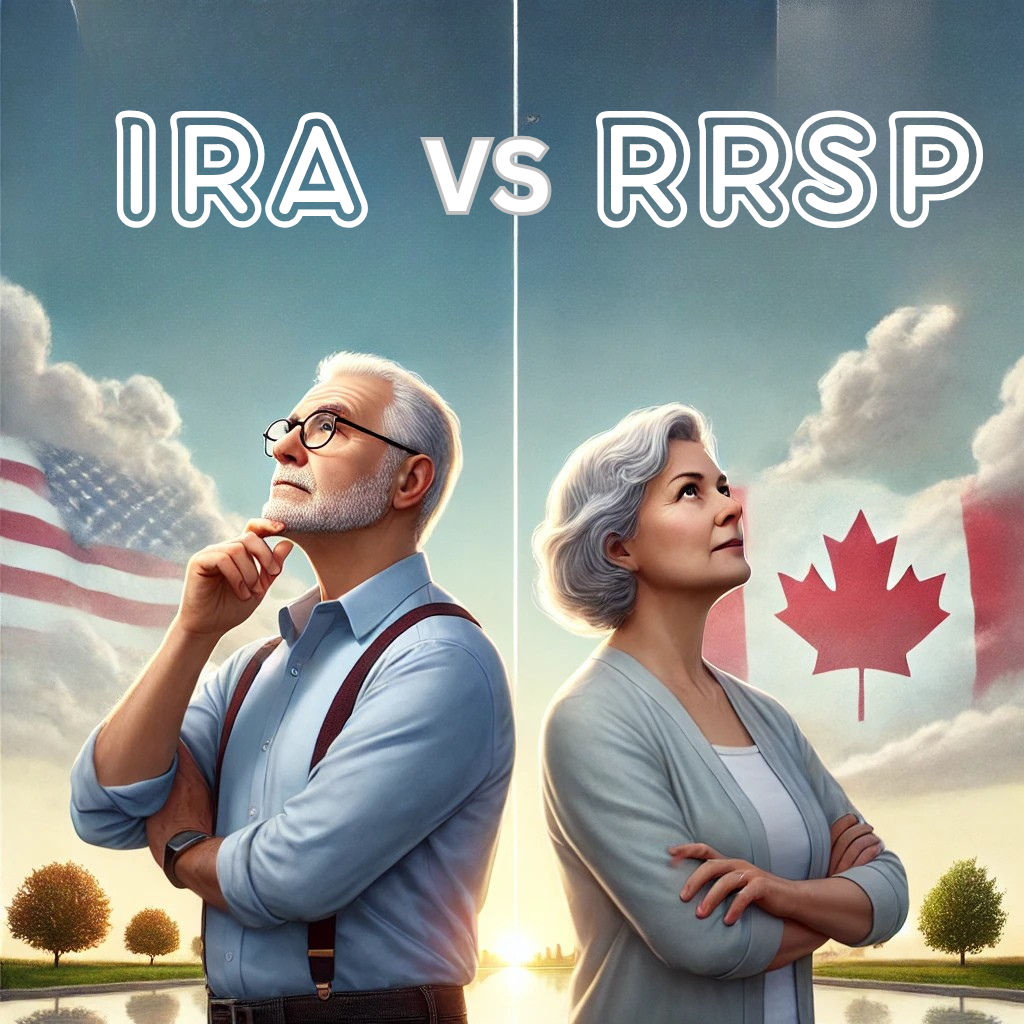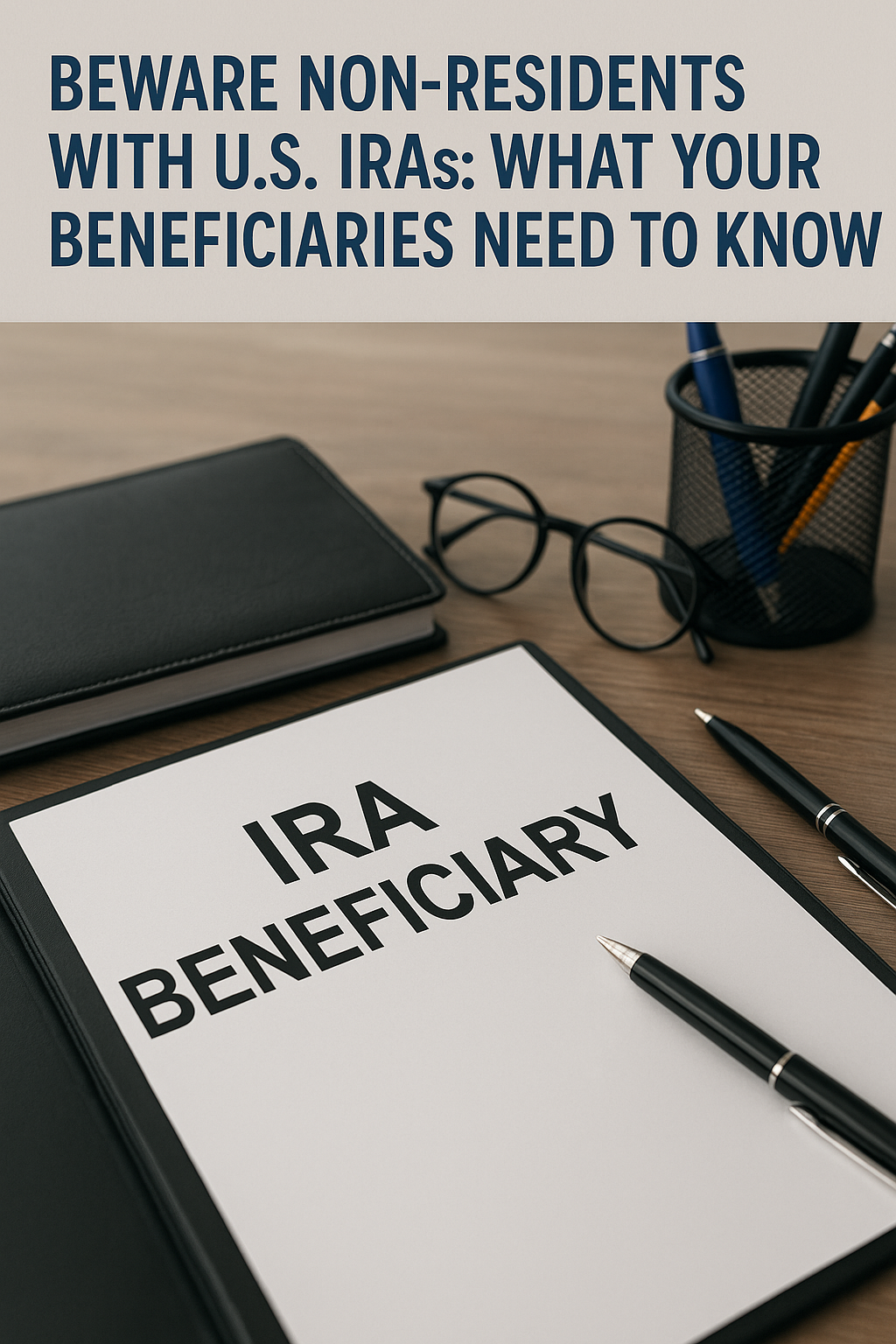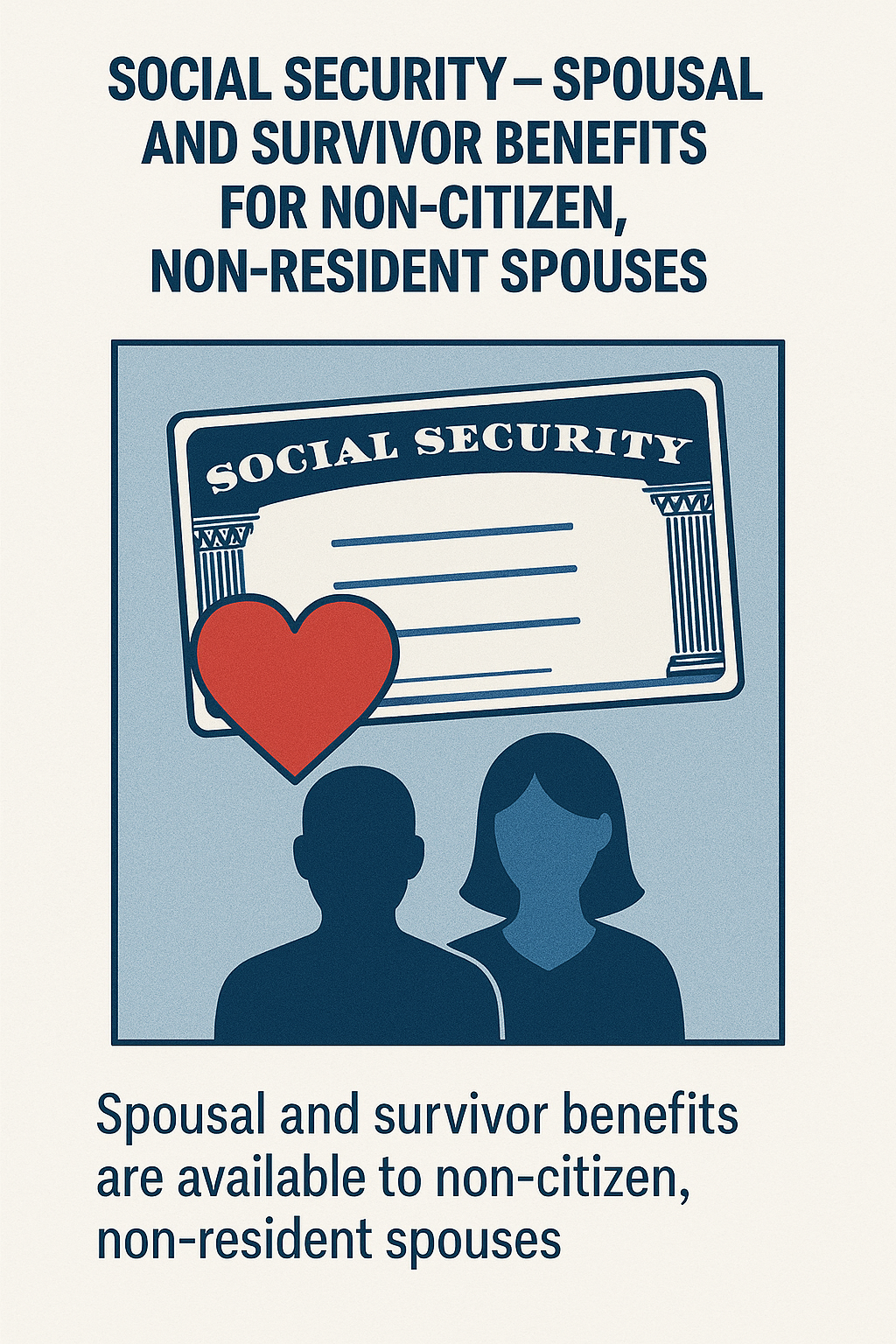 alt="" class="wp-image-2121"/>
alt="" class="wp-image-2121"/>If you have both an IRA (Individual Retirement Account) and an RRSP (Registered Retirement Savings Plan), deciding which account to draw from first can significantly impact your retirement cash flow and tax efficiency. Your residency—whether you live in Canada or the U.S.—plays a crucial role in this decision. This article discusses where you should source your income and spending money between the time when you retire and age 72, when minimum RRIF distributions are required.
For most individuals, spending down the RRSP first is generally the best strategy, especially if you reside in Canada. However, for U.S. residents, there are key tax nuances that may affect this decision.
Why Canadians Should Focus on RRSP Withdrawals First
- Similar Tax Treatment: In Canada, both IRA and RRSP distributions are taxed as regular income. As a Canadian, withdrawing from your RRSP helps to mitigate future tax burdens since RRSPs have specific withdrawal requirements that increase as you age.
- Higher Withdrawal Requirements: By age 71, an RRSP must be converted to a RRIF, and distributions must start by age 72. These RRIF withdrawals are generally higher than the U.S. RMDs, thus it’s beneficial to reduce the RRSP balance sooner.
- Tax Implications Upon Death: Canada taxes the full RRSP value at death unless transferred to a spouse or dependent child with a disability. Reducing your RRSP can prevent your estate from facing a high tax bill, as large balances can push your tax bracket over 50%.
- IRA Tax Deferral: An IRA allows for extended tax deferral through an Inherited IRA, which can be advantageous if managed correctly. Human beneficiaries get 10 years to distribute the account in full. The limit is 5 years for non-human beneficiaries such as trusts and estates.
U.S. Residents and RRSP Withdrawals
For U.S. residents, focusing on RRSP withdrawals first might also make sense due to specific tax regulations.
- Withholding Taxes: Non-resident Canadians face a 25% withholding tax on lump-sum RRSP withdrawals, but this can be lowered to 15% for periodic payments under the Canada-U.S. Tax Treaty. This helps in managing cash flow efficiently.
- Partial Taxability in the U.S.: While IRA distributions are fully taxable, only the growth portion of an RRSP is taxed in the U.S. The original contributions, made as a Canadian resident, aren’t taxed again, creating unique planning opportunities.
- Basis Crystallization: Before moving to the U.S., selling off RRSP investments can limit the taxable growth to the period post-migration. This maneuver can be significant for reducing future liabilities.
- Similar Canadian Taxation: Both IRA and RRSP withdrawals are fully taxable in Canada, so there’s no direct advantage for either account when you’re considering just Canadian taxes.
Considerations for Cross Border Residents
- Estate Tax and Inheritability: U.S. citizens face estate taxes on both IRA and RRSP balances. Canadians could be liable for U.S. estate taxes only when U.S. property exceeds a particular value, making estate planning crucial.
- Returning Canadians: For Canadians moving back, Roth conversions might be a part of your strategy. Taking RRSP distributions while working in the U.S. could offer benefits since only a portion may be taxable there initially.
Conclusion
Navigating the complexities of IRAs and RRSPs requires thorough understanding and strategic planning. The decision on which account to draw from first depends on various personal factors and cross-border tax rules.
Getting the right advice is essential, which is why working with cross-border financial specialists can be invaluable. They can help tailor a plan that maximizes your income and minimizes taxes, ensuring your retirement is as financially secure as possible.
Frequently Asked Questions
How should one approach withdrawals from an IRA and RRSP as a U.S. citizen living in Canada?
When deciding between withdrawing funds from an IRA or RRSP, it’s important to consider your current residence and tax obligations in both countries. For most individuals, spending down the RRSP first is generally the best strategy, especially if residing in Canada. You should also consider exchange rates and potential penalties.
What are the U.S. tax implications for reporting RRSP distributions?
U.S. citizens living in Canada must report RRSP distributions on their U.S. tax returns. The Internal Revenue Service (IRS) requires these distributions to be included as income. Make sure to stay updated with any changes in tax laws to avoid penalties.
What are the considerations for maintaining an RRSP after relocating to the United States?
Maintaining an RRSP after moving to the U.S. requires understanding of both tax systems and the Canada-U.S. Tax Treaty. Canada will withhold tax on distributions, and only a portion of your distribution is taxable in the U.S. It’s advisable to work with a cross-border advisor to ensure compliance with ongoing tax obligations and optimize your tax position. Your investment advisor should be licensed and registered in both the U.S. and Canada because it is a Canadian account domiciled in Canada, and you live in the U.S. and are subject to U.S. tax obligations.
Can U.S. citizens residing in Canada face penalties for incorrect PFIC reporting?
Yes, U.S. citizens in Canada can face heavy penalties if they fail to properly report their Passive Foreign Investment Company (PFIC) holdings. It’s crucial to file correctly each year to avoid substantial fines. Consider seeking professional advice to ensure you meet all reporting requirements. Registered accounts are not subject to PFIC reporting, but any taxable accounts need to be managed in USD or individual Canadian securities to avoid the PFIC rules.
What is the impact of expatriation from the U.S. on my IRA and what financial planning is required?
Expatriating from the U.S. may affect your IRA in various ways, including changes in tax rates and withdrawal rules. It’s vital to create a financial plan considering the tax implications in both the U.S. and your new country of residence. Consulting with a financial planner experienced in expatriation issues can help you plan effectively and reduce tax liabilities.




